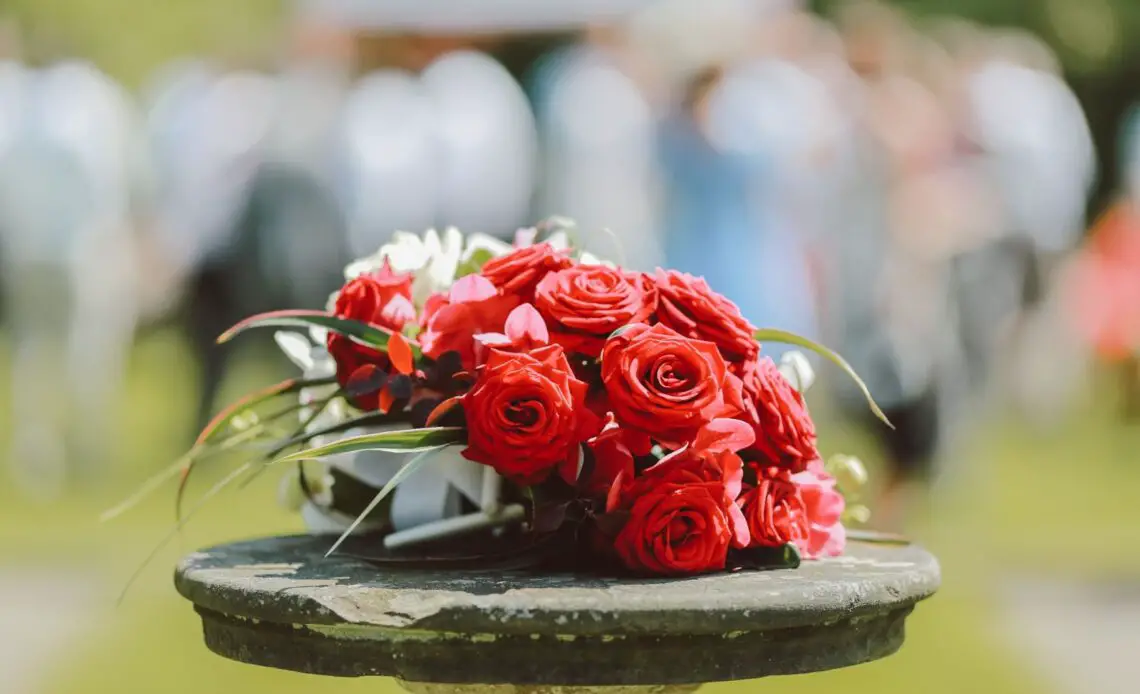
Last updated on May 22nd, 2023 at 03:42 pm
Posies are generally considered flowers, but technically they are small bouquets. They are known by a few names—nosegays or tussie-mussies. They had existed since medieval times when they were typically worn or carried.
These bouquets are traditionally bound by doilies at the stems in different arrangements. Some arrangements include concentric circles (with lesser blooms surrounding a central queenly rose composed of mixed flowers and herbs) edged with a paper frill, starched lace, or wire-wrapped greenery.
‘Posy holders’ come in various shapes and sizes (but often in silver, brass, porcelain, ivory or pearl). They allow the person to wear them at their waist or in the hair or secure it with a brooch.
What does the Posy flower symbolize?
The posies are altogether completely different from other types of flowers. In the case of the latter, each flower had a specific symbolism. But since posies are small bouquets, each one had special meaning and was given to people to convey messages. This has been happening since the Victorian era.
Posy flower meaning does not only pertain to love or dedication. Depending on the type of flowers, they could share all types of messages with a posy flower.
For instance, a sprig of dogwood returned by the young lady was a sign of indifference. A varicolored pink meant that she rejected her suitor’s affection. Or a posy made up of candytuft and yellow carnations meant she was not that into him.
Meaning of the Posy flower colors
Red color
The red color of posy flowers most commonly means ‘feelings of true romantic love’. Next to romantic love, they signify passion, respect, desire, and courage.
Yellow color
Yellow, posy bouquets are primarily associated with spreading happiness and joy. According to psychology, the bright shade of yellow is known to make someone’s day better and increase the positive energy in a room. However, it is the ideal color for symbolizing friendship, trust, compassion and respect.
Pink color
They generally mean happiness, gentleness and femininity but sometimes have a similar meaning to red flowers, which symbolize love.
Orange color
Orange posies are known to symbolize the feeling of excitement, adventure and enthusiasm, just like their bright and bold hue.
White color
The white posy flower conveys purity, innocence and sympathy. Hence, they are traditionally used as bridal bouquets and also for memorial services.
Blue color
The color blue in flowers is said to portray tranquility and peace and also spread the feeling of relaxation to help ward off negative feelings and stress.
Purple color
The purple color represents royalty and even success. And at times, they also denote tradition and feelings of admiration, charm and grace.
Lavender color
Purple and lavender may be similar in shade but convey different emotions. The posies flower meaning for this color is grace, elegance and youth.
Green color
The greenish hue in nature and flowers are the same – symbolizing youthfulness, good fortune and health. They also stand for rebirth and renewal.
Interesting facts about the Posy flowers
- During the Middle Ages and the early modern period, European women carried small bouquets of posies to neutralize the odors of daily life, whereas men tucked them into their lapels.
- Sometimes, posy holders featured a ring at the end of a chain, which women around the fingers wore. This was done so they could dance properly while the posy swung freely.
- The rhyme – ‘Ring around the Rosies’ – mentions the word posies that people carried during those times to protect against the plague.
- People used posies as a carry-on air freshener but also as a precaution. This was during the various outbreaks of plague in Europe, from Black Death in 1348 to the Great Plague in 1665 and numerous waves between them.
- The term nosegay emerged in 15th-century Middle English from an amalgamation of two words – nose and gay. The word gay here means ornament. Thus, a nosegay is an ornament that appeals to the nose. It is a small bouquet tied together and used as a sweet-smelling way to mask the nasty odors of medieval times. A nosegay is neither a gift nor placed in a paper cone.
- The word tussie-mussie came from the reign of Queen Victoria when it became a popular fashion accessory carried by fashionable ladies in the mid 19th century. Suitors brought tussie-mussies to young ladies filled with flowers symbolizing subtle sentiments. This type of communication was called the ‘Language of Flowers or Floriography’. E.g. If a man wanted to declare his love to a woman, he would have presented a bouquet or posy of red tulips, roses, chrysanthemums or carnations to her.
- In modern times the term posies flower refers to specifically small bouquets in a conical metal holder or the holder itself, particularly when used at a white wedding.
Best time to gift Posy flowers
As mentioned in the earlier paragraphs, nosegays are traditionally carried by the bride and the wedding party members. However, they are slightly smaller than the bride’s bouquet. They are also used as wedding decorations and other wedding flower gifts. They are used for memorial services. Depending on what posy flower means based on colors, tussie-mussies are given to other people to convey messages.
In addition, nosegays are used as medical table centerpieces, curtain tiebacks and Christmas ornaments. The most unusual use of nosegays was in English courtrooms. The judge carried them in with him and placed them in front of him to ward off jail fever (remove the stench of the prisoners who had left jail).
Conclusion
Play around and find which combinations you like best. A lovely bouquet brightens anyone’s day, regardless of its traditional meaning!
If you want to know and learn more about flowers, we at PansyMaiden can help you. Check out our fun, easy-to-read, and informative flower-related content that you will surely enjoy!
